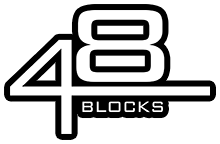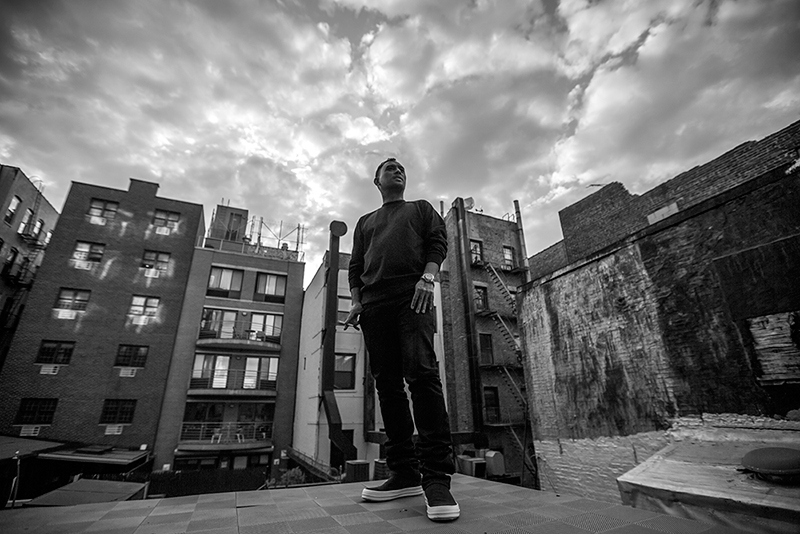In 2006, Michael “Mega” Yabut and his partner Alfred De Tagle launched Black Scale in San Francisco. A decade later, their brand commands worldwide notoriety for having blurred the lines between streetwear and contemporary fashion. With retail flagships in SF, LA, Tokyo, Shanghai, and a new shop set for New York, Mega sits down with The Hundreds to discuss where Black Scale, and the surrounding industry and culture of street fashion, are headed…
What’s the story behind how you launched the brand?
We wanted to offer something different. At that time, it was a really bright world of streetwear. Streetwear was really popping, but what was popular were all-over prints and really bright and flashy stuff. We wanted to be a little darker, and bring it back to another side that streetwear wasn’t used to. At that time, there was only a few dark brands. Those dark brands were pretty much from Japan and London, and a few in New York. But on the West Coast, there were really no dark brands, so we wanted to come out like that and be different. And the main thing, we didn’t have a name for it, because we didn’t know what we were gonna name it. We had an outlet to push it, which was the HUF store. We had all of our homies, and we worked there. So we thought, “why not just make a blank black silk label, and just push it.” Cause people would actually come in and not buy online. Online shopping wasn’t popular then. So we would just push people to our brand while we were working the store, sorry Keith.
When did you guys actually settle on the name Black Scale, and where did it come from?
The first year, we did four seasons of t-shirts. After the first year, we named it Black Scale. Black Scale is just a weird name too, but it worked. We were looking for something symmetrical. Something that wasn’t obvious, so we could play with that mysterious theme that we were messing around with in the beginning. We just liked it. We flipped the A’s to V’s and kept everything balanced.
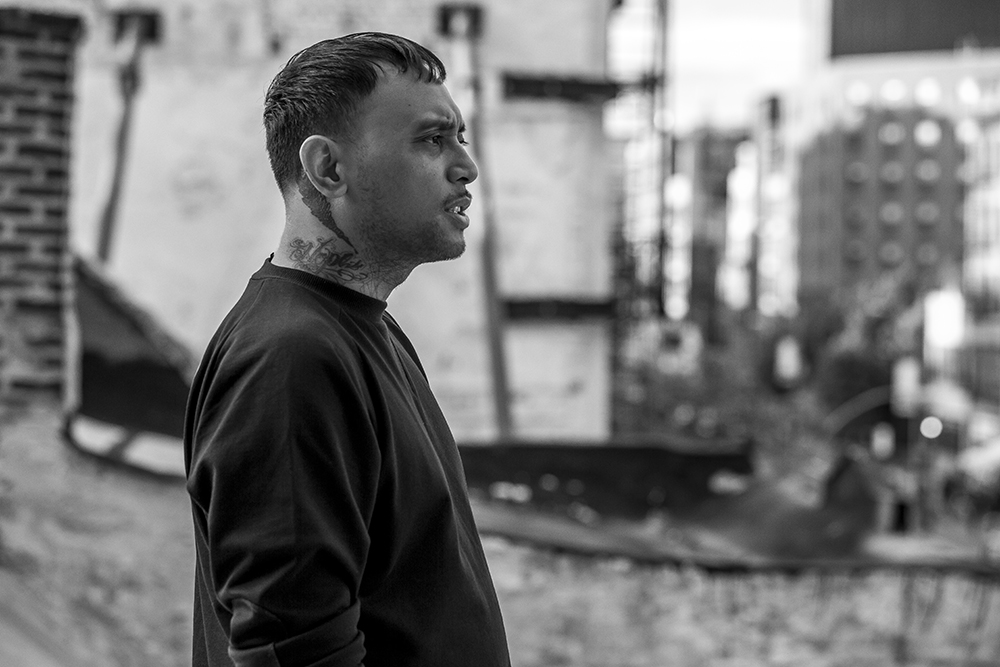
Mega. All photos by SDJ.
Were you looking at anything for inspiration when developing the themes of black arts, illuminati, etc. that’s been prevalent in the brand’s image over the years?
We were already inspired. We were already planning to make sure that we came out with a dark line. We were into Scandinavian metal, death metal art, the Thrasher logo, Anton LaVey because the brand is from San Francisco, old school underground metal bands, punk bands—just that whole steez that wasn’t really popular in graphics. Back then, you could only really get those type of graphics if you went to a concert, Hot Topic, or some old-school vinyl rock and roll shops. You couldn’t find those graphics anywhere else. We wanted to use that whole outlet and apply it to our graphics and shirts. Plus, it was just that rebellious, “go fuck yourself,” type graphics. We didn’t want to be like what was popular then. We wanted to offer something that was different. People weren’t used to it, but it was around, people just weren’t used to it in streetwear.
This was 2007, going into 2008. The internet was there, but it wasn’t what it is today. How did you guys go about building a following in an era where you didn’t have the platform to get your message out quickly and easily?
I think us being sneaker heads and hunting, traveling to different cities and meeting people, meeting different people that were into similar things that we were. I think that was the most important part. It was like the internet, but you actually bought a plane ticket and crashed on someone’s couch. Then you got to spend a couple of days with them, and get to be their homie. We did that a lot on the West Coast—Seattle, Portland, L.A., L.A. a lot. That’s where all the homies were, where all the brands were. Outside of New York, L.A. was coming up. It was bubbling. You had Rogue Status coming out of there, The Hundreds, Undefeated, the Supreme store opened, you had Diamond. I could name all the guys, Crooks. They were all out there, so we became homies with all of them. We had an advantage because we were helping buy—we were buyers at HUF. So we already came from a dope sneaker store and boutique store. Those cats already respected us from being at the store. They all wanted to sell at HUF, so we made relationships with them. Eventually we got them into the HUF store, and we were one of the first stores that they sold to in San Francisco. So when we ended up building our brand, they all supported us because we supported all of them. From there, it was so different between the East Coast and West Coast, because everyone on the West Coast all hung out and were all boys. Even though there was a little politics somewhat, everyone was still together. Everyone pushed for the same thing—to one day have a successful brand. It wasn’t as cutty and hard like New York was. New York is like, “We all have brands, and we all do our own thing. Go fuck yourself.” On the West Coast, it was like, “Let’s all do our thing and let’s do it together.” So boom, the word spread.
“Everyone [on the West Coast] pushed for the same thing—to one day have a successful brand.”
At what point did you stop working at HUF and start doing Black Scale full-time?
So Keith at that time, he closed down the Hayes Valley store. Then he closed down the L.A. store. And then closed down all of the Sutter stores. When he closed down the L.A. store—I opened that one up with him—I moved to L.A. He was just like, “Yo, it’s time for you to do your thing. We’re gonna close the shop down, we feel like you and Alfred could really kill it with Black Scale.” Honestly, I was fucking spooked bro. I was scared shitless. I’m in L.A., I’m not from there, I’m calling all the boys back in Frisco like, “I’m gonna move back.” Keith and Anne were just like, “Do it here.” I called Alfred, my business partner, and he was like, “I’ll do Frisco, you stay in L.A., and we’re just gonna grind it out.” From there, we just grinded it out.
Around this time, the internet is starting to hit.
Oh yeah, it’s hit. This is 2009. MySpace is like done. We balled out already. We got followers. Our generation was super into it. Now you see that it’s really really booming. You had Nick [Diamond] showing the world what could be done—that you could be successful at this. Nick at that time was kind of what started it all. The Crooks guys were buying Ferraris and Lamborghinis already. We just like, “Oh damn, this could be a real business.” It was just perfect timing, and the internet was a big part of that—the Twitter launch.
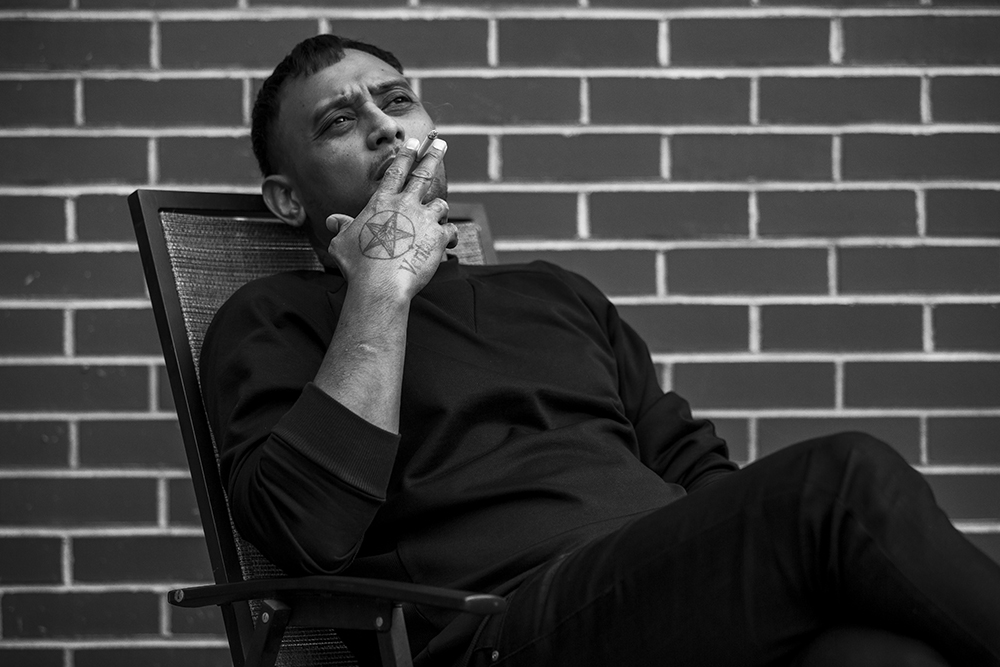
It was around that time that you guys opened your first retail store.
That was 2008 in Frisco, it was a pop-up, then in November 2008 we opened Union Square.
How did that happen?
That was insane. We were the first streetwear brand in Union Square; that was our goal. One day, we’re going to close Haight and go back home. It was crazy. I was in L.A., and we started developing more ready-to-wear. We treated it like the drug game. We never used any of the money, we just kept re-upping. We saved all of this money from our past seasons, and then we did this little pop-up store in Frisco. We got a space for like $500 bucks a month or something. It was on San Jose Ave. That space was making 40 grand a month. We did it for four months. We were like, “What the fuck is going on!” And we were open every day. We were like, “This is crazy that we’re making this type of money.” We still didn’t pay anyone except our employees, we had three employees at the time. We were like, “Alright, we saved up enough money, let’s do a real store in Union Square.” And then, Alex Aquino and I were driving in Union Square. And we found a second-floor spot and we literally got out of Alex’s car and stood there for like four hours. I’m smoking cigarettes and he’s smoking joints, and we were like, “This is it.” Alex was like, “I want to invest.” I was like, “Nah, we don’t need investors.” And he was like, “Nah, I want to invest in the first Black Scale store.” So Alex gave us like 50 grand, like cash out of his pocket in a shoe box. We literally went to Alfred’s house—that was our office at that time—and we put away that shoe box for an emergency. We started the buildout, and we were like, “Boom, we’re running out of money.” So we pulled that out, and we opened the store with that—and boom, we had our first store open.
How was the growth after that? Brands get solidified when there’s a physical location.
New York was the next thing, that was the next year. What happened was, I went to go visit my boy Dave who was working at the SSUR store. I always go visit him when I’m in New York. I was like, “What’s up, is Russ [Karablin] gonna keep this space or not, because we’re going to open a store regardless.” He was like, “I don’t know, talk to Russ.” So I literally went back to L.A. and had a meeting with Russ. I was like, “Let’s do a collab store and call it BLVCK SSURPLUS.’’ He was like, “let’s do it.” So we went half and half on the New York store, and we had that store together for three years. It helped us to get a stamp from the OG’s and Downtown heads, and be in New York. And we helped SSUR get back in the scene and grow. So it was a dope-ass trade.
“We treated it like the drug game. We never used any of the money, we just kept re-upping.”
Around that time Rocky came onto the scene.
It was the third year. We had just opened L.A., and that’s when Rocky came into the New York store. Whenever we opened L.A., Rocky came out and started rapping. He and Alfred, they became super cool. They both smoke, and they just kicked it. From there, Rocky just took over and marketed the brand. He was growing. We were growing. He introduced us to a whole other lane of new kids and people with this new style of rap which was from New York, but sounded like it was from the South. You didn’t know where the hell these kids were from. They had their own style, and it blended right in with Black Scale.
How did Rocky’s success impact the brand?
That was crazy. Ever since we started, it was just gradually growing every year. When we opened our first store in Union Square, we saw a big jump in growth. When Rocky came in, we saw a whole other jump. But it was a different type of growth, because we felt like a real brand because it wasn’t just t-shirts and hats. We were doing a whole collection. We were a little more mature, and we knew where we wanted to go as a brand. Rocky was perfect timing. After all the hype with Rocky, we opened a store in Japan, and eventually Shanghai.
What was your personal journey during the brand building phase? You were bicoastal for a number of years.
I came to New York in 2012. Alfred was crazy busy with the store. SSUR was cracking, so what Alfred and I wanted to do was open our showroom. We opened our showroom, and from there we wanted to split our agreement with SSUR and let them have their original store back and open our new store. Before any of that happened, he wanted me to move to New York. So I made the move to New York, and we made all of that happen. SSUR had his own store, we had our own store, and I was bicoastal for four years.
Where do you consider Black Scale to be based out of at this point?
It’s still San Francisco. It’s always going to be a San Francisco brand. That’s our roots. It’s our number one store. It’s our biggest staff. It’s just home. Every member that still rides with us in Frisco are the original employees of the first pop-up store. They’re still there. It’s just now, one is the head of all online, one is the head of accounting. It’s so gnarly.
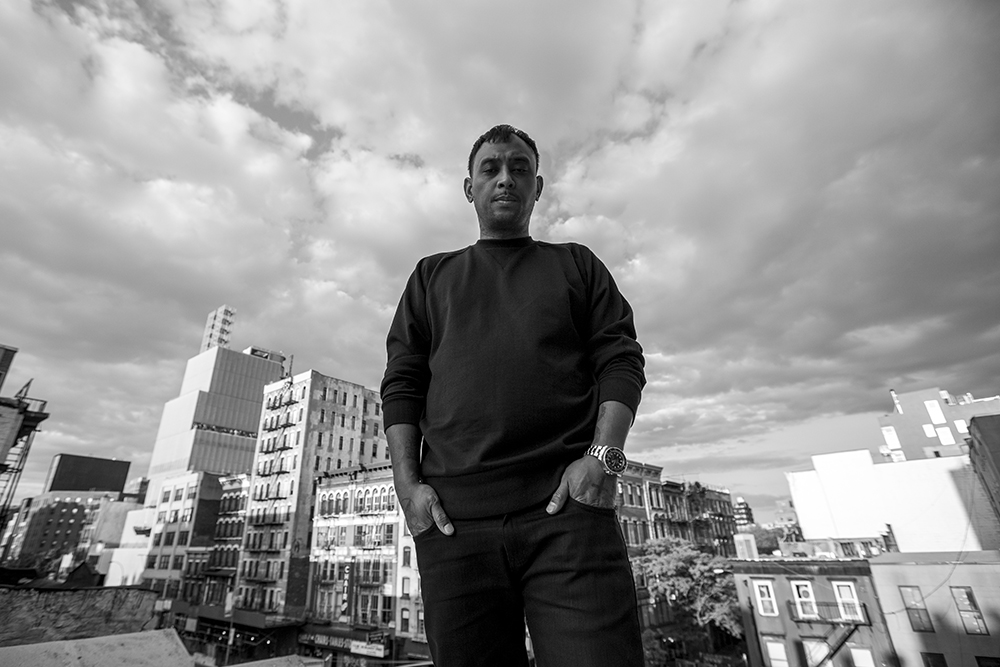
What’s the design process like and what role does everyone play in creating the look of the brand?
It’s great for us. Alfred and I started the brand doing graphics together, and all of the sportswear together in the beginning stages when we really didn’t know how to make clothes. Alfred is still the head of all graphics in that division. I actually stepped down. I don’t do much of the business anymore. I became the creative director last year. So I’m just all creative now. Basically, it starts with my crew in L.A., the design and production crew is in L.A. with me. We start with the ready-to-wear collection there. After the ready-to-wear collection is complete, Alfred takes over and does all of the graphics with me, and all of the sportswear. Alfred and I are really still directing the entire brand, but now we’re just really focused on creative. Then we have all of our assistant designers and production teams that work under us. They make the magic, and really make the garments that we want them to create. We’re just directing now.
You guys have also been releasing some visually striking lookbook videos. Who is responsible for those?
That’s also our internal crew that’s with us at Black Scale photography and video. It’s an ill team that we’ve had put together for awhile. They get what I’m trying to convey with my vision. I don’t know how to shoot and edit, so those guys make the magic happen too. I just have this vision, and I write it all down. And we just make it happen. Really, it’s all freestyle. We don’t have a real way of doing videos. We just shoot tons of scenes in different locations, and we just grab what we think looks dope. We interview who that character is for that video, and let them rant for an hour. Then we just grab the illest shit that they say.
“I think some brands lost [themselves] by getting too used to the money… They forgot about the integrity of why we became brands.”
Through all of the growth and success, what’s been the key to staying relevant?
I think for us, it’s balancing starting from being this darker, mysterious brand, and now with the industry changing and the customer changing, we went for a more mature look. I think for us, it was easier to switch over to a cleaner look. Imagine if you’re a brighter brand, or a brand that wasn’t so dark. If you tried to go dark, it would be a little difficult. We started dark, so it was easier for us to become a more basic brand to get get older. We get older too, and we mature. So our style changes. We just wanted to feed people our age. Still keep the youth with all the graphic-driven stuff, and all the stuff that we’re used to doing. But I’m 37 now, and I wanted to start dressing like a 37-year-old. And then hopefully get that customer that’s also 37. I think brands just lose that—they don’t change with time. They don’t know how to balance who they are originally and how they can work with the marketplace now.
What are your thoughts on contemporary streetwear or streetwear meets fashion?
I think it’s dope. It’s going back to the Japanese way. The Japanese destroyed that. Growing up, our streetwear brands from Japan were Neighborhood, WTAPS, Undercover, those guys are insane fashion brands now. So for American brands to do that and compete with the European brands that are streetwear and contemporary, it’s dope that people are looking at America now. We have brands like Fear Of God and Off White that are hitting higher levels of price points and higher fashion. But they come from streetwear. The kids are crazy, cause they can just afford more expensive shit. When we were kids, we couldn’t afford that shit. But that’s the internet and Kanye hype.
What are your thoughts on what Kanye’s doing?
It’s good. You know, I love Kanye for the music. But as far as all of the fashion stuff, I don’t really care for it. I just love Kanye for music. I grew up on Kanye’s music. I have different fashion people that I look up to. No discredit to Kanye. But I’m a fan of other designers that dedicated their lives to fashion. Like Kanye dedicated his life to music. That’s why I love his music.
What are your views on your contemporaries, the brands that came out of that mid-2000s era of streetwear?
I think that the brands that are still around matured to a level where they became real businesses and took it seriously. Those guys are still around. Some might have whored out, and some might have not. And then there’s dope dudes that were a part of that era that aren’t around anymore. They just didn’t flow with the business. They just wanted to keep it core, or they were probably just sick of it and didn’t want to do it anymore. It’s important that the brands that are still around now from our era became the businesses that they are—because that’s all that we wanted. We all wanted to be successful. We didn’t know how successful we could be, or exactly how much money we could make, or how many employees we could employ. But it’s dope to see these brands that were hanging out back then and started when we started become real powerhouses. I think some brands lost by getting too used to the money. They lost themselves in making too much money. That’s going to eventually have them crash. You see that now with some brands. You don’t necessarily see them or hear about them because they’re crashing at the moment, or they crashed already. They forgot to move with time. They forgot about the integrity of why we became brands. It became all about the money. There’s nothing wrong with that, but if you want to stick around, you definitely still have to have integrity. And it can’t be all about the money.
What are some things that you like and dislike about the culture right now?
The internet. I like the internet. I dislike the internet. It’s a balance. I like that you can share what you create with more people in a short amount of time. But then, I hate what you’re sharing is also out of the window in the next couple of days too. That’s what fast fashion is now. That’s why your Zaras and H&Ms are powerful. You’ll go to a fashion show, and you’ll see all of these bloggers take pictures of the runway. That’s cool that you’re sharing this with me and the entire world, but fast-fashion brands are just copying it. And it’s out on the floor in a couple of months rather than six months to a year, which is what you have to wait for a high-fashion brand to release what’s on the runway. So the internet is definitely what I hate about the culture. But I love it too. So it’s weird to say that, but I just have a very strange relationship with the internet.
“I think for the guys in our industry, it’s important for them to keep doing what we do and be out of the box, because now the big guys are watching.”
How important do you feel that it is to be out-of-the-box and innovative?
I think it’s still important. And I see it today. Growing up in this industry, the youth that weren’t used to Black Scale said, “Ah, it’s too dark. It’s satanic. It’s whatever. I can’t wear it.” Now you see high-fashion brands really mimicking what streetwear has done, and do it today. And they kill it. I think for the guys in our industry, it’s important for them to keep doing what we do and be out of the box, because now the big guys are watching. They’ve got to get their ideas from somewhere too, and I think our industry is a good place for them to borrow. Because we borrowed from them for so many years with how we built our brands. It’s nice now that they borrow from the little brands and the up and coming brands.
What are your thoughts on fashion’s appropriation of streetwear?
Man, I could talk about this forever. I think it’s a balance. I love YSL, but growing up, I couldn’t buy it. I wasn’t really into it, I couldn’t wear those clothes and I couldn’t afford it. Then today, YSL comes out and becomes Saint Laurent, hires Hedi Slimane and makes it streetwear. It’s like, “Damn, that’s dope!” I have a job. I can afford Saint Laurent. And it looks streetwear. I think that’s a good case. But then, you have newer brands that are trying to be high fashion. And it’s like, “Why are you charging that much?” I can make the same quality garments as you. You haven’t been around as long as I have. But you have a stamp from a celebrity or whatever. How are you gonna charge me that much for whatever you’re making. You don’t have Saint Laurent’s brand. You don’t have Saint Laurent’s employees. How are you going to charge me that much for whatever you’re making? How do you justify your prices? So there’s that too. Then there’s the high fashion brands that I hate, like Jeremy Scott from Moschino biting all the graffiti homies’ artwork and not paying them. Now they’re in court battling. And he’s not giving them the credit that they deserve. He took a picture of a wall in Detroit and said, “That’s graffiti. You can’t sue me because you’re vandalizing.” I hate that too. You have to respect the street part of it too. It’s not just called streetwear. There are some things about it that really happen in the streets. You’ve got to respect those artists too. I hate that part of high fashion because they think that they can just do everything. Sometimes you’ve got to give that right credit to those amazing artists that risk their lives all night just to make sure that those tags go up. That’s a big battle that’s going in court with RIME, MSK, AWR, Jeremy Scott, and Moschino. And I can’t fucking stand that shit. But Jeremy Scott comes from streetwear.
How do you see streetwear evolving over the next three to five years?
Man, that’s a hard question. I actually had this talk with some of my friends in Japan when I was last there. We were all trying to figure out what the next moves are to be creative in retail. We all had these answers, but none of us think it’s the right answer. We’re still trying to prepare for it. I think it’s going to be street, contemporary, fast-fashion brands. Your Fear Of Gods, your Off Whites, those are your next wave. Kids don’t mind spending the money anymore. Somehow, some way, they’re finding the capital to support what they love—their materialistic habits. With us, it was drugs, partying, drinking, and being alcoholics. For them, it’s like no drugs, no drinking, no girls, I just want clothes. I think that’s just going to be the next wave for a little bit. It’s street, contemporary, fast fashion.
